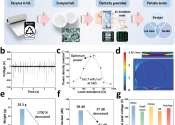US i/əˈluːmɨnəm/
ə-loo-mi-nəm
Aluminium or aluminum (US English) is a silvery white member of the boron group of chemical elements. It has the symbol Al, and its atomic number is 13. It is not soluble in water under normal circumstances. Aluminium is the third most abundant element (after oxygen and silicon), and the most abundant metal, in the Earth's crust. It makes up about 8% by weight of the Earth's solid surface. Aluminium metal is too reactive chemically to occur natively. Instead, it is found combined in over 270 different minerals. The chief ore of aluminium is bauxite.
Aluminium is remarkable for the metal's low density and for its ability to resist corrosion due to the phenomenon of passivation. Structural components made from aluminium and its alloys are vital to the aerospace industry and are important in other areas of transportation and structural materials. The most useful compounds of aluminium, at least on a weight basis, are the oxides and sulfates.
Despite its prevalence in the environment, aluminium salts are not known to be used by any form of life. In keeping with its pervasiveness, it is well tolerated by plants and animals. Because of their prevalence, potential biological roles, beneficial and otherwise, aluminium compounds are of continuing interest.









